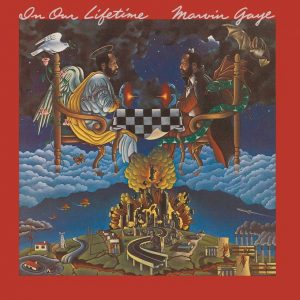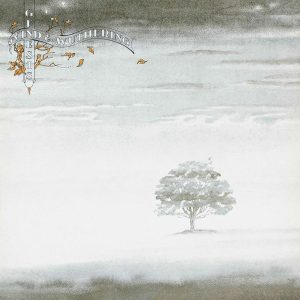Jazz drumming was never the same after the arrival of Gene Krupa, the hurricane-handed sticks man they dubbed “The Chicago Flash.” With his combination of movie star good looks, swashbuckling virtuosity, and flamboyant showmanship, he transformed not only the role of drummers in bands but also the way they were perceived.
Before Krupa lit up the 1930s jazz scene like a supernova, drummers were all but invisible; perceived as the least skilled of musicians, their positioning at the back of the stage seemed to indicate that they were less important than other members of the band. Their role was deemed purely supportive, one that involved keeping time and maintaining the rhythmic flow of the music. It was an important task, but one that was often taken for granted by other musicians as well as the listening public. Gene Krupa changed all that. By helping to popularize the drum solo – a vehicle intended to show off his skill and virtuosity – he rapidly became a celebrity.
The drum solo was a radical innovation that was dependent on Krupa making key adjustments to the way his drum kit was set up. His kit built on the snare-kick-hi-hat setup which the innovative New Orleans drummer Baby Dodds had established as the norm in the early 1920s. Krupa added resonant tom-tom drums, which he finely tuned to blend with his snare sound, as well as extra cymbals to provide more tonal color.
Krupa first made waves as a teenage drum prodigy whose pulsating polyrhythms lit up the already vibrant Chicago jazz scene in the late 1920s. His ascent to the top of his profession was meteoric; as a sideman he played with the legendary hornblower Bix Beiderbecke and then made his mark with Benny Goodman’s swing-era band, before embarking on a solo career. By 1973, when Krupa died, he had amassed a huge back catalogue, which included many notable sideman appearances as well as a plethora of solo projects.
For those new to Krupa’s music, it can be a daunting task finding a starting place from which to approach his oeuvre, so we’ve compiled a list of 20 essential tracks that serve as an introduction to one of jazz’s most explosive and charismatic drummers.
Listen to the best Gene Krupa songs on Apple Music and Spotify.
Gene Krupa’s formative years
Eugene Bertram Krupa was born in Chicago’s impoverished South Side in 1909 into a family of Polish immigrants. The youngest of nine children, he was first drawn to jazz when helping out in his brother’s music store when he was about ten years old. He briefly flirted with playing the alto sax, but felt a greater affinity for the drums. By the age of 13, Krupa was obsessed with jazz and practiced incessantly. Soon, he was good enough to start playing with local Windy City jazz and dance bands, but at the insistence of his mother, who was a devout Catholic, went to study to become a priest at a seminary in Indiana. He quit after a year and returned to music, quickly rising through the ranks in the vibrant Chicago jazz scene.
Krupa made his first recording with the McKenzie-Condon Chicagoans at 18-years-old in 1927, a band led by singer/comb player Red McKenzie and guitarist Eddie Condon. They cut the hard-swinging single “Nobody’s Sweetheart,” which had the distinction of being one of the first 78s to feature a full drum kit, though its sound was deadened with rugs to avoid overloading the recording equipment. Krupa’s drums – and especially his cymbals – were more audible on the jolly “Mama’s Gone, Goodbye,” a single he cut with bassist Thelma Terry And Her Playboys in 1928.
Benny Goodman
Both these early performances showed Gene Krupa in a restrained mood but as recording techniques improved, he could play with more volume and intensity. His big breakthrough was joining the Benny Goodman band in 1934. By then, Krupa’s style had evolved dramatically; it swung more aggressively and flowed in a 4/4 time rather than the jaunty 2/4 meter that had distinguished the New Orleans-influenced sound of Chicago jazz.
Krupa injected Goodman’s band with a propulsive, turbo-charged rhythmic energy that took the ensemble to another level. Using a high arm action that emphasized his hand movements, he brought a show-stopping visual drama to his performances. The apex of Krupa’s tenure with Goodman came in January 1938, when the clarinetist’s band performed at Carnegie Hall, an august venue usually reserved for classical music. Recorded for posterity, the concert became legendary and crowned Goodman the “King of Swing.” But it was Krupa who got most of the plaudits, especially for his dynamic tom-toms on an epic 13-minute version of Louis Prima’s “Sing Sing Sing.”
Krupa’s dynamism is also evident on “Don’t Be That Way” from the Carnegie Hall album; his performance starts subtly but then he drops in some explosive bass drum accents and adds short, machine-gun-like snare drum breaks, taking the song up several gears. Another facet of Krupa’s skill set can be heard on the concert’s fast and furious “China Boy,” which he propels by using wire brushes.
Gene Krupa’s band
With Gene Krupa’s fame beginning to eclipse Goodman’s, the clarinetist, who purportedly didn’t like sharing the limelight with his drummer, attempted to tone down his sticks man’s flamboyance and limit his crowd-pleasing solos. Eventually, a frustrated Krupa left to form his own band. Its first significant recording was 1938’s “Jungle Madness,” a combustible showcase for Krupa’s pounding tom-toms; the record’s flipside, “Apurksody,” considered the drummer’s first signature tune, was less dramatic; a mid-tempo instrumental that highlighted his work as an ensemble player and proved that not all his tunes were vehicles for ostentatious virtuosity.
A year later, Krupa’s orchestra issued a slew of 78 rpm singles, scoring its first hit with “Drummin’ Man,” an infectious slice of brassy big band swing driven by Krupa’s drums that featured singer Irene Day. After this, the drummer’s group went on a hit-making roll, denting the US charts with the quietly stomping “Quiet And Roll ‘Em,” featuring lively brass interplay, and another percussion-themed opus, the self-written rhythm and blues-flavored “Drum Boogie,” also spotlighting Day.
In 1941, Krupa hit big again with the intoxicating swinger “Let Me Off Uptown”; by then, his band included a sassy young singer called Anita O’Day and the virtuoso trumpeter Roy Eldridge, whose talent also shone brightly on two Krupa classics from the same timeframe – the frenzied “After You’ve Gone” and the gentle, horn-led ballad “Rockin’ Chair.”
But just as Krupa’s career was in its ascendancy, in 1943 he was arrested for marijuana possession – a charge the drummer always denied – which resulted in a 90-day jail sentence that sullied his reputation and derailed his career.
Gene Krupa in the 40s and 50s
Although he would find it hard shaking off the “junkie” image that the American tabloid press gave him, Gene Krupa got his career back on track thanks to the jazz impresario Norman Granz, who featured the drummer at his groundbreaking Jazz At The Philharmonic concerts, which began in 1944. Later, in the 1950s, Krupa’s career flourished at Granz’s Clef and Verve labels, where the recently developed 33 1⁄3 rpm long-playing record allowed the drummer to deliver extended performances that reflected how he played in a live setting.
The high point of Krupa’s tenure with Verve was the 1956 big band album Drummer Man – Gene Krupa In Highest FI, which reunited him with O’Day and Eldridge. Together they cut new versions of the three previously mentioned classic tunes they had taken into the charts in 1941. Other highlights were “Boogie Blues,” garnished with O’Day’s smoky vocals, and “Leave Us Leap,” a crackling Count Basie-influenced number that highlighted Krupa’s ability to drive a band with a high octane rhythmic fluency.
Such was Krupa’s fame in the 50s that he appeared in several Hollywood movies, including two biopics, The Glenn Miller Story and The Benny Goodman Story, where he played himself. He even saw himself portrayed on the silver screen by actor Sal Mineo in the 1959 movie The Gene Krupa Story, whose memorable tagline was “He hammered out the savage tempo of the jazz era!”
The epic drum battles
No introduction to the best Gene Krupa songs would be complete without mentioning some sensational tracks that resulted from his collaborations with fellow drum maven, Buddy Rich. Krupa’s first album to feature the New York tub thumper was The Drum Battle, his debut LP for music mogul Norman Granz’s Clef label in 1952. It was recorded live at Carnegie Hall as part of Granz’s Jazz At The Philharmonic events, and features Rich on the title track. The tune is a furious barrage of percussive exchanges between the two drummers, where their thunderous press rolls, seismic tom-tom detonations, and explosive cymbal crashes elicit cheers and screams from the watching crowd.
The next recording Krupa and Rich made was 1956’s Krupa And Rich, their first studio endeavor together, which yielded an electrifying duel on “Bernie’s Tune.” After a tense, six-minute hail of percussive crossfire defined by ricocheting paradiddles, a swing-driven song emerges, featuring the Oscar Peterson Trio augmented with hornblowers Dizzy Gillespie and Roy Eldridge. From the same album, Krupa played without Rich on “Gene’s Blues,” displaying his skill in driving the band with his forceful swing rhythms.
The pair’s final studio collaboration was arguably their most satisfying together: a rip-roaring big band album from 1962 called Burnin’ Beat, which contained incendiary versions of Count Basie’s “Jumpin’ At The Woodside” and Duke Ellington‘s “It Don’t Mean A Thing (If It Ain’t Got That Swing.”
After Burnin’ Beat, Krupa, who suffered from ill-health in the last decade of his life, only recorded three more albums, his final one coming in 1972, the year before his death at the age of 64. By then, he was a bonafide legend even though the swing music he had helped popularize was a distant memory. But the concept of the flamboyant drum solo that he had patented back in the 1930s was taken up by a new generation of virtuosic, hard-hitting rock drummers like Led Zeppelin’s John Bonham and The Who’s Keith Moon.
A key contributor in establishing the composition of the drum set, Gene Krupa, with his blend of speed, skill, energy, and stamina, etched the blueprint for the modern drummer. Though he’s long gone, his influence lives on.
Think we missed one of Gene Krupa’s best songs? Let us know in the comments below.




